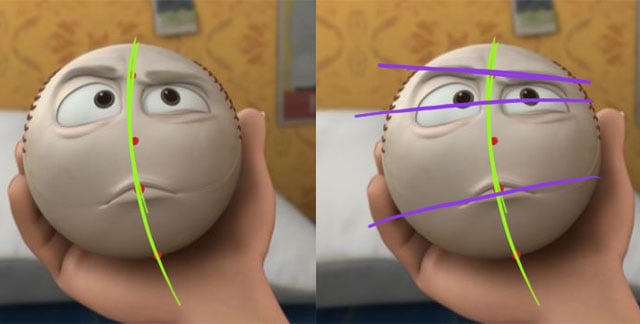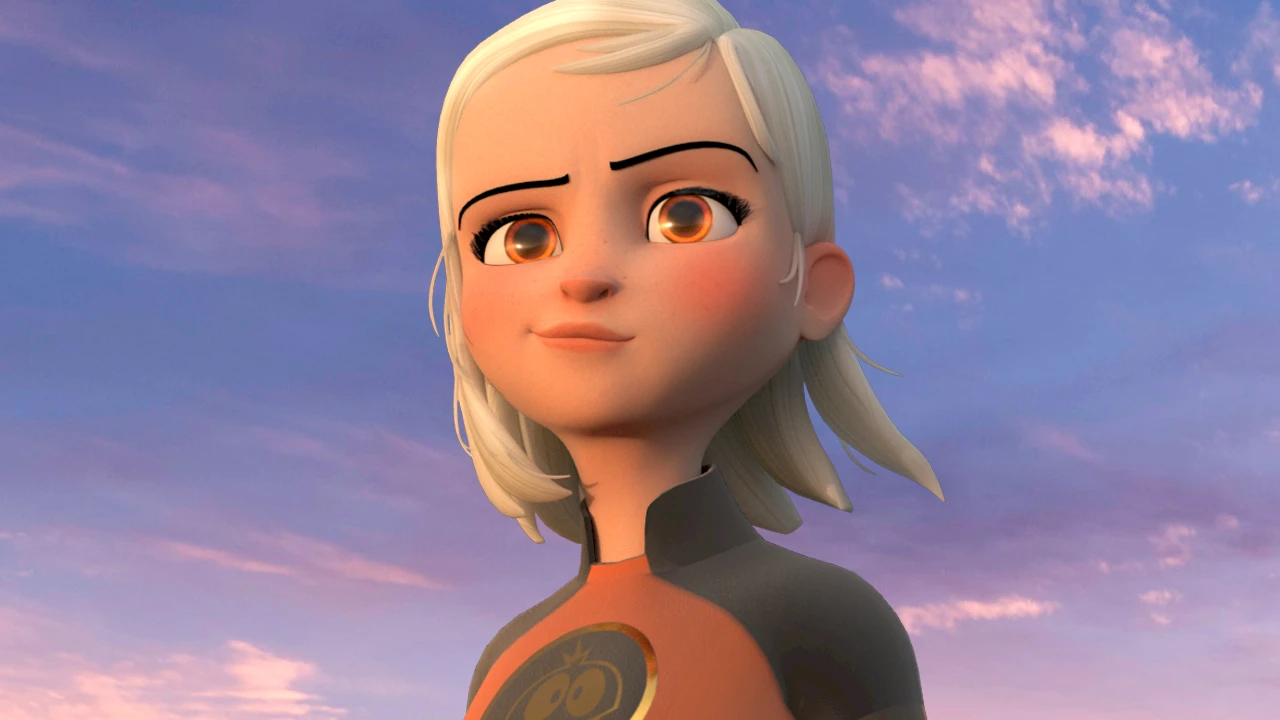David Tart is a long-time mentor here at Animation Mentor. He also serves as an Animation Director with our friends at Pivot VFX. And, as you will soon read — he has a passion for students, the school, the studio, and great work. A big thank you to David for his strong mentorship to our students — both in the classroom and in the studio.
There’s more to the Pivot VFX story. Visit the Animation Mentor Blog next week for first-hand accounts from some of David’s team — the same team comprised of several Animation Mentor graduates (and future graduates).
— The Animation Mentor Crew
Putting together a crew: Searching for animators
Last November, when Pivot VFX was awarded some feature animation work for a major studio, I was tasked with putting together a crew of animators who could not only do the job — but do it well. I’ve put together animation crews in the past for a variety of projects, reviewing literally thousands of demo reels. As most animators and students know, resumes are very rarely regarded in the hiring process … the demo reel gives most of the information needed, at least regarding their understanding of basic animation principles.
Taking direction
That being said, the one aspect that you can’t really get from a demo reel is whether the animator “takes direction.” In the animation business, and especially feature animation, an animator is tasked not with creating a performance from scratch, but rather, realizing the character, actions, and personality that has been formulated by the writers, directors, and producers. You might have some amazing “toon style” animation on your reel — but what if the project calls for more realistic movement? Or vice versa?
Keeping in mind that movement styles, range of expression, and personality aspects revealed by movement are already in place on these types of projects, the question of whether an animator is “good” at animating becomes a moot point — you might have an incredible demo reel from your studies, or your own projects, but this doesn’t indicate whether you have this most important of skills — the ability to receive and implement critique and direction in a professional manner.
Wanting to learn
Another aspect that is key for people I hire is whether they are interested in learning. Most of us know that becoming an amazing animator is a life-long process — we don’t hit some magical point of “becoming an expert” and then just kick back using the same skill set year after year. And yet, this sometimes happens with animators … we learn a bag of tricks at a certain studio, or project, or from our instructors, and then shut down, imagining we can get by with that skill set.
This attitude or perception makes it very difficult to adapt to new techniques, movement styles, or process in place on a production. If an animator isn’t in that humble Zen-like place of “being a beginner every day” — it can heavily affect the outcome of his or her work. Most of the really good animators I know are hungry to learn. In fact, when choosing jobs, these animators don’t just look at salary — not at all. One of the first questions they ask is “how will this project help me improve my skills?” When I interview animators, if they ask questions pertaining to talent development classes, new techniques, or animation library resources, I instantly recognize them as someone I want to work with!
Knowing what’s important
Animation projects can have very demanding hours and often take you away from home for months at a time. Direction can sometimes be confusing and difficult to implement. A shot you’ve spent weeks polishing can sometimes change at the whim of a producer or director. Producers and coordinators can be tough task-masters, pushing for shots to be finished under tremendously tight schedules. Life in the studio can be hard! Hiring animators who are both hungry for knowledge and have the ability to gracefully implement a variety of directorial changes creates a dynamic, fun atmosphere in the studio, even during these tough times. The animators seek out critique not only from the directors and supervisors, but from one another. Having team members who are overly-emotionally invested in their work, or stubborn in their techniques can affect the morale of the entire department — and setting the bar low for animation quality and performance is never a good idea.
I’m sure anyone reading this has experienced this in a group setting, whether in animation or something else. That being said, in my experience, most animators are fun-loving, easy-going people, letting hard critique and demanding production schedules roll off their backs. They don’t necessarily start out this way — learning to be humble and easy going about your animation work takes time, for some of us longer than others.
It took me years to “let go” of the idea that my own work wasn’t amazing, that the director just couldn’t see my “brilliance” and my “true genius.” I kept expecting that one day I’d put up a shot for review in dailies, walk into the screening room, and have everyone rise out of their seats and break into spontaneous applause, shouting things like “amazing!” or “how is he so awesome?!?” This fantasy made it really hard for me for a few years — obviously, this fantasy never came to pass, and I learned to take my pleasure from knowing that I had animated a solid shot; carried the character, story, and emotional arc for my scene; and implemented the desire of the director or supervisor.
Choosing Animation Mentor students
So this all gets back to: Why did almost all of my hires for this project graduate (or were close to graduating) from Animation Mentor? How did they meet the requirements for a) having great work on their demo reels, b) being able to take direction, and c) being hungry to learn?
Graduating with great work
Animation Mentor students generally graduate with solid demo reels. The coursework prepares them to put forth work that shows solid physicality, action, and acting skills. Planning and animation principles are emphasized in every course, so a solid groundwork in preparing to animate a shot is inherent.
Living within a culture of critique
Animation Mentor students are initiated in the culture of critique from day one, and this is no mistake. (Animation Mentor CEO and Cofounder) Bobby (Beck) and all of the cofounders of Animation Mentor know that good animation is not created in a vacuum. Furthermore, they knew that if an animator is to succeed in the industry, he or she must absolutely be able to receive, interpret, and implement critique in a non-reactive, forthright manner. Hiring working animators — mentors — to guide the students through each course further ensures that the students receive professional-level critique at all stages.
As students move forward in their courses, they are encouraged to give one another this same type of hard-focus, no punches-pulled critique. Some students don’t survive this process, or at least have to take a break, because it can be very tough … but those who do survive this process have developed a critical skill that will serve them well for years to come!
Staying open and remaining flexible
Another amazing aspect at Animation Mentor is the sheer variety of technique and approaches that are brought to bear in each course. Every course has an underlying objective — learning solid physicality, understanding solid planning, and understanding a particular animation principle and implementing that in the assignment. But each mentor has a different approach — a different work process, a different method of implementing that underlying principle. Sometimes this confuses students. I’ve had some of my students balk and say “so and so told me never to move the lower eyelids upwards to meet the upper in a blink” or “I was told that you should always use copied pairs for blocking, never step keys.”
Obviously, every mentor feels passionate about his or her technique, but most of us qualify our approach by remaining humble: “This is the way I do it — I know there are other approaches” (but, ha ha, mine is still the best!). The benefit to the student in all of this is that he or she are exposed to the idea that there are many different processes and techniques out there, and that staying open and remaining flexible is an important part of becoming a professional animator.
Thinking aloud: Was I crazy?
Having been a mentor myself, I knew that the hires would possess those qualities which would guarantee a certain level of success — great work, solid implementation of critique, and a strong desire to learn. I hired nine animators who had little or no feature experience, and one journeyman animator to help provide a presence of mentorship. Two hadn’t even graduated from Animation Mentor yet!
I sweated out the first four weeks of the project, hoping that the team could rise to the level of feature animators. Not to say that I just “hoped” — I gave in-house classes on blocking, planning, dialog, action analysis. I also spent one-on-one time with each animator, cracking open their Maya files and delving into their curve editors. I probably scared half of them out of their wits, because I’d not only challenge their Maya techniques, but their attitudes as well, trying to help them get past attachments to particular techniques or processes that I could see weren’t useful (sometimes being more than just casually suggestive!). The crew had to “get it” and get it fast! We were using the client studio’s pipeline and a variety of super-complex scripts and tools that had been developed over the years — tools that most of the team had never seen before. There was an intense amount of information to absorb, digest, and then make use of every day. We weren’t hitting quota this first month and I started to worry that I’d been overly optimistic.
Reminding myself: Relax, dude
It’s four months later and we’re ramping down. Over the course of the production, my fears evaporated. The team was awesome. Each one of them brought something special to the table. They all remained open to learning and faced difficult shots with courage and grace. Did they have difficulties? Sure, but they kept at it, like we all do. In the final analysis, I am extremely grateful to have not only worked with these great animators, but hopefully to have passed something on to them, as they have to me (yes, I’m still learning!).
— David Tart




